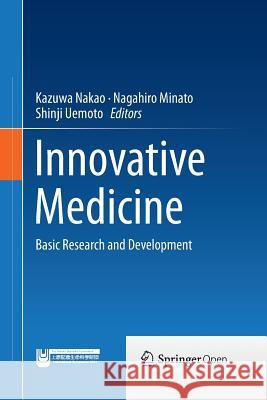Innovative Medicine: Basic Research and Development » książka
topmenu
Innovative Medicine: Basic Research and Development
ISBN-13: 9784431562467 / Angielski / Miękka / 2016 / 339 str.
Kategorie BISAC:
Wydawca:
Springer
Język:
Angielski
ISBN-13:
9784431562467
Rok wydania:
2016
Wydanie:
Softcover Repri
Ilość stron:
339
Waga:
0.49 kg
Wymiary:
23.39 x 15.6 x 1.85
Oprawa:
Miękka
Wolumenów:
01
Dodatkowe informacje:
Wydanie ilustrowane











